Car drawing can be a fun and rewarding hobby for anyone interested in automotive design. Whether you’re an aspiring artist or just looking to improve your skills, there are countless tips and techniques that can help you create stunning and realistic car drawings. From mastering perspective and proportions to adding depth and shading, the possibilities are endless when it comes to car drawing.
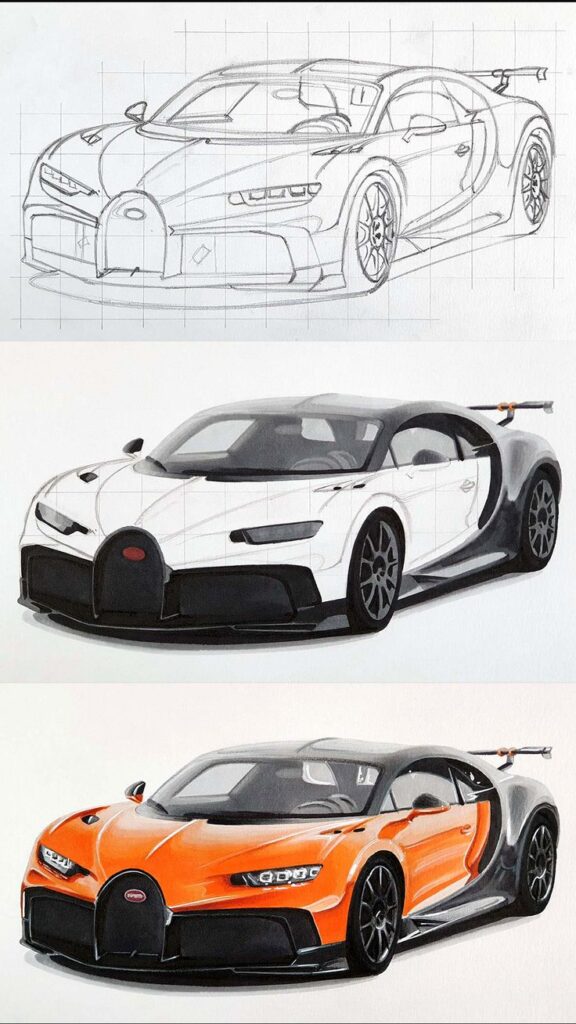
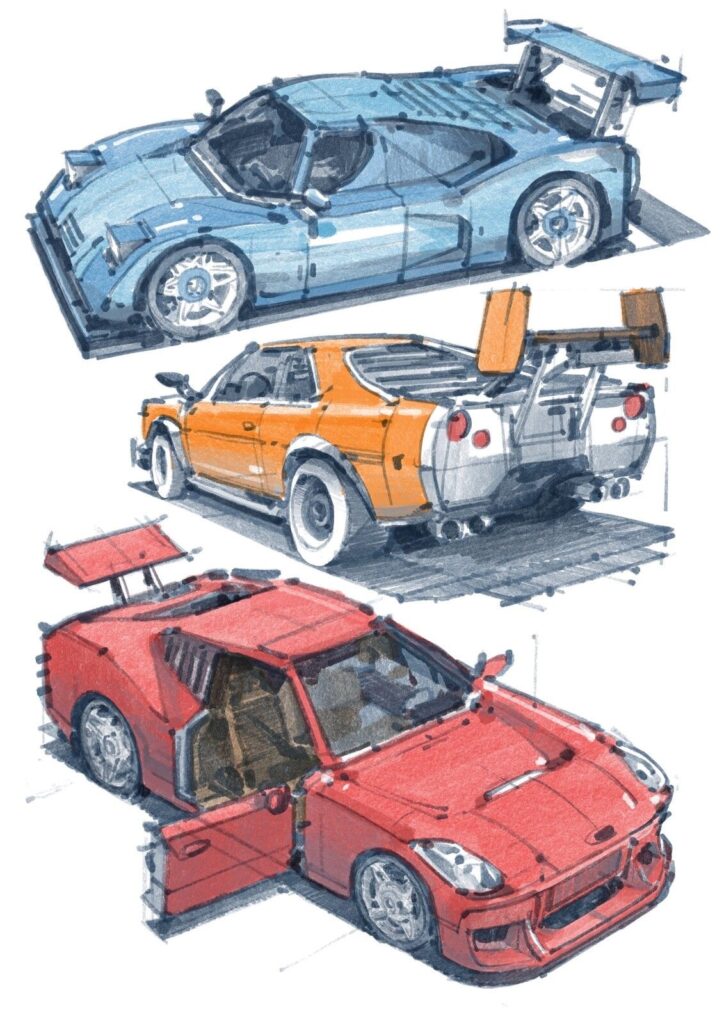
In this article, we will explore ten car drawing tips that can help take your artwork to the next level. Each tip will focus on a specific aspect of car drawing, from sketching the initial design to adding the finishing touches. Whether you’re a beginner or an experienced artist, these tips are sure to inspire and guide you in your car drawing endeavors. So grab your pencils and paper, and let’s get started!
1. Understand Car Proportions
Understanding car proportions is crucial to drawing cars accurately. It is the foundation upon which every exceptional car drawing is built. Without a profound grasp of proportions, a car drawing will lack the realism and accuracy that makes it stand out.

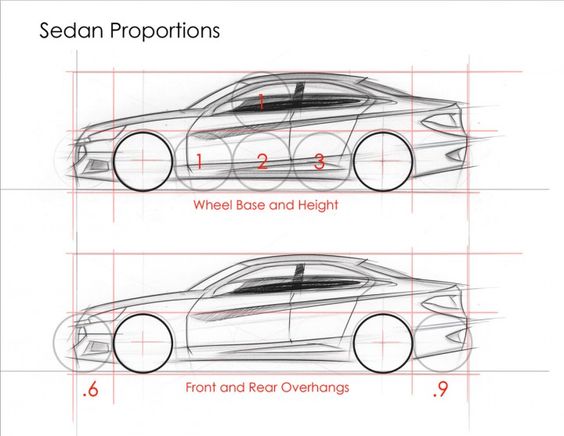
To begin with, it is essential to break down the car into its fundamental elements. The main components of a car are the wheels, body, and cabin. The wheels are the foundation of the car, and the body sits on top of them. The cabin is where the driver and passengers sit.
Once these basic elements are identified, the next step is to focus on the proportions of each component. The size and shape of the wheels, body, and cabin must be in proportion to each other. For example, if the wheels are too small, the body will appear too large, and the drawing will look distorted.
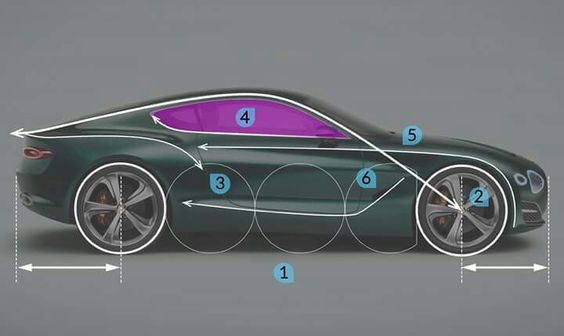

One technique to ensure accurate proportions is to sketch the car section by section. This method allows the artist to concentrate on smaller, manageable sections, making it easier to maintain accurate proportions. Gradually building the sketch, as each section is completed, will bring the car’s shape and details together.
In conclusion, understanding car proportions is the foundation of every exceptional car drawing. Breaking down the car into its fundamental elements and focusing on the proportions of each component is the key to achieving an accurate and realistic representation.
2. Master Basic Shapes
To create a realistic car drawing, it’s essential to start with mastering basic shapes. By breaking down the car into simple shapes, it becomes easier to create an accurate representation.
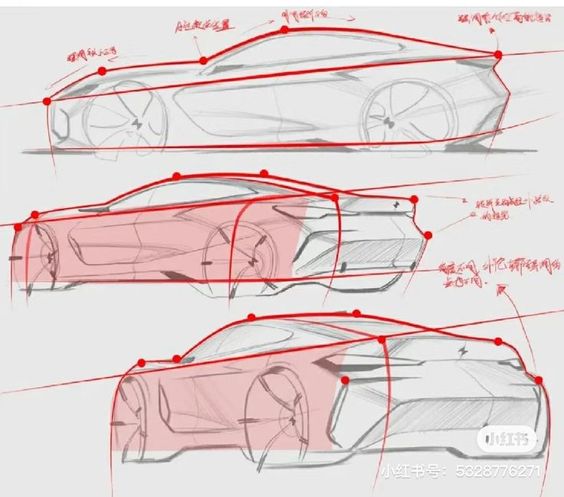

Begin by drawing the basic shapes of the car, such as the body, wheels, and windows. Draw these shapes as lightly as possible, as they will be erased later. Once the basic shapes are in place, it’s time to start refining the drawing.
To refine the drawing, begin to add details, such as the headlights, taillights, and door handles. Pay attention to the proportions of each part and make sure they are accurate. Use a ruler or other drawing tools to ensure straight lines and symmetry.
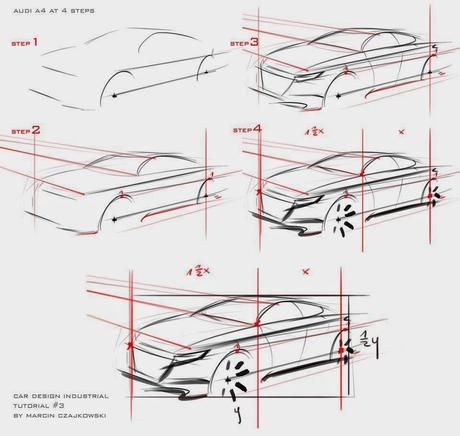
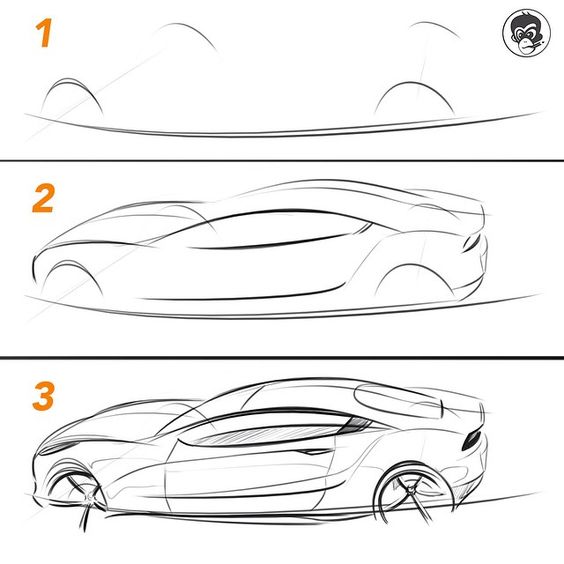
Remember to take the time to practice drawing basic shapes before moving on to more complex shapes. With practice, mastering basic shapes will become second nature, and creating realistic car drawings will become easier.
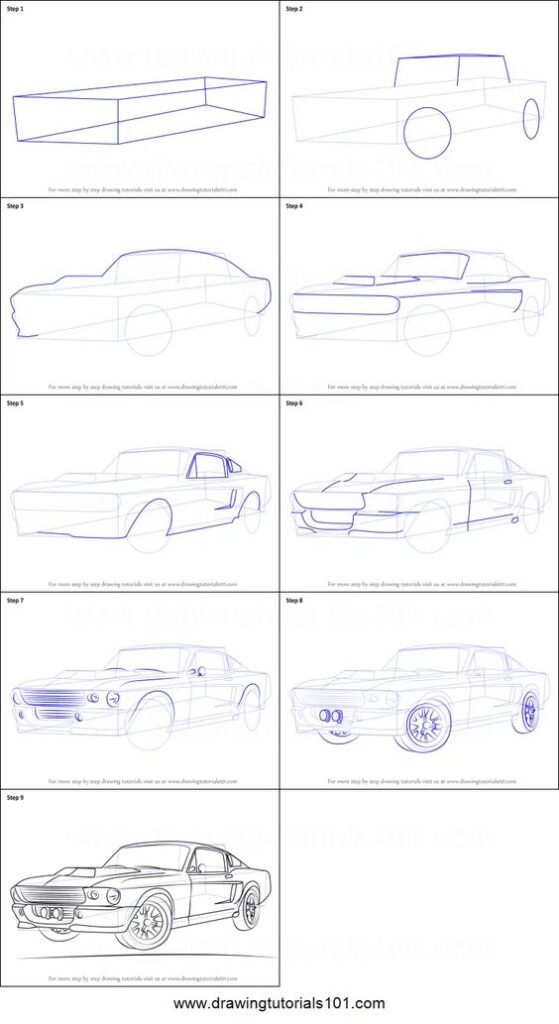

By mastering basic shapes, you will have a solid foundation for creating more complex car drawings. With practice and patience, anyone can learn to draw a car with accuracy and realism.
3. Use Light Guidelines
When it comes to drawing cars, using light guidelines can be a game-changer. Light guidelines are faint lines that serve as a rough guide for the placement of the car’s major features. They help the artist to create a proportional and accurate drawing.

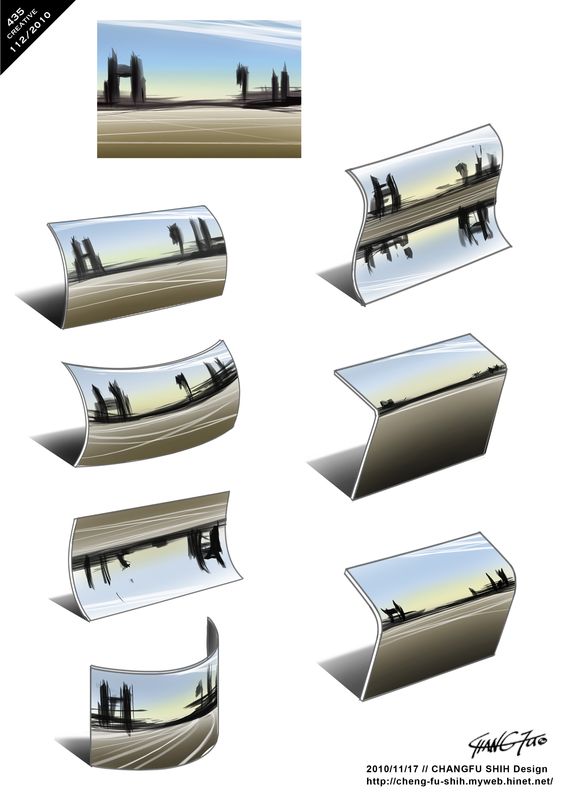
To use light guidelines, start by sketching a rough outline of the car. Then, use a light pencil to draw the guidelines for the major features such as the wheels, doors, and windows. These guidelines should be faint enough to be easily erased later.
Once the guidelines are in place, the artist can begin to add more details to the drawing. By following the guidelines, the artist can ensure that the proportions of the car are accurate and that the major features are in the correct position.
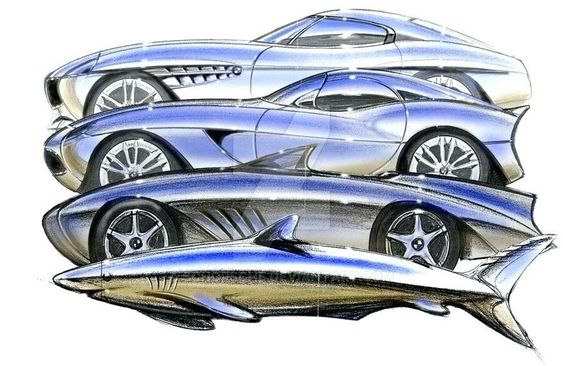

Using light guidelines can also help to save time and reduce frustration. Without guidelines, the artist may struggle to get the proportions and placement of the features right, leading to a lot of erasing and redrawing. With guidelines, the artist can work more efficiently and with greater confidence.
Overall, the use of light guidelines is a simple but effective technique that can help artists to create more accurate and proportional car drawings.
4. Focus on Perspective
When it comes to creating realistic automotive drawings, focusing on perspective is essential. Perspective helps to create the illusion of depth and three-dimensionality in a two-dimensional drawing. It is what makes a car drawing look like a car, rather than just a flat image on a piece of paper.
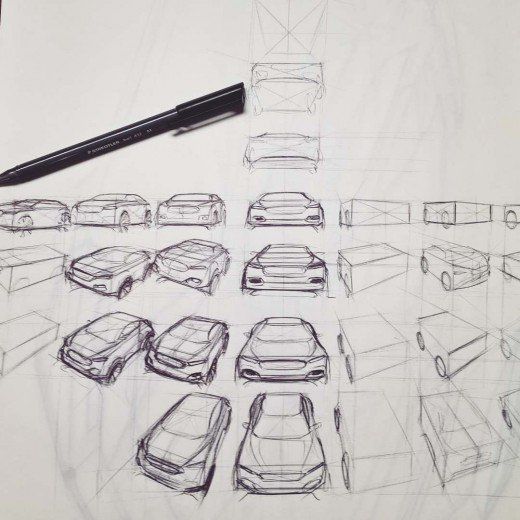

To achieve a convincing perspective, it is important to understand the principles of one-point, two-point, and three-point perspective. One-point perspective is used for drawings where the subject is facing directly towards the viewer. Two-point perspective is used for drawings where the subject is at an angle to the viewer, and three-point perspective is used for drawings where the subject is viewed from above or below.
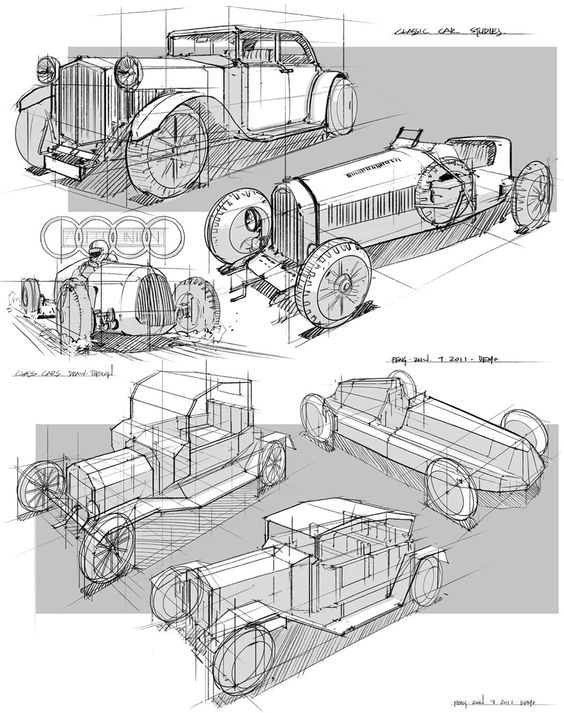
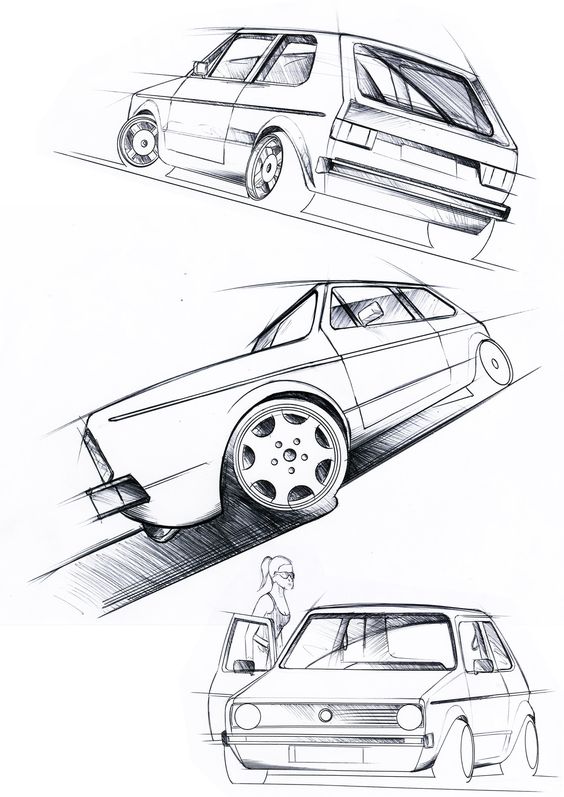
In addition to understanding the principles of perspective, it is also important to pay attention to the details. This includes the placement of the horizon line, the vanishing points, and the angles of the lines. By paying attention to these details, the artist can create a drawing that looks realistic and believable.
Overall, focusing on perspective is a crucial aspect of creating a realistic automotive drawing. By understanding the principles of perspective and paying attention to the details, an artist can create a drawing that looks like it could drive right off the page.
5. Study Real Car Photos
Studying real car photos is an essential step to improve your car drawing skills. By observing the proportions, shapes, and details of different cars, you can gain valuable insights into how to draw them accurately.
One way to study real car photos is to look at cars on the street, in parking lots, or in car magazines. You can also find many high-quality photos of cars online. When looking at the photos, pay attention to the details such as the headlights, taillights, wheels, and grille. These details can make a big difference in the overall appearance of the car.

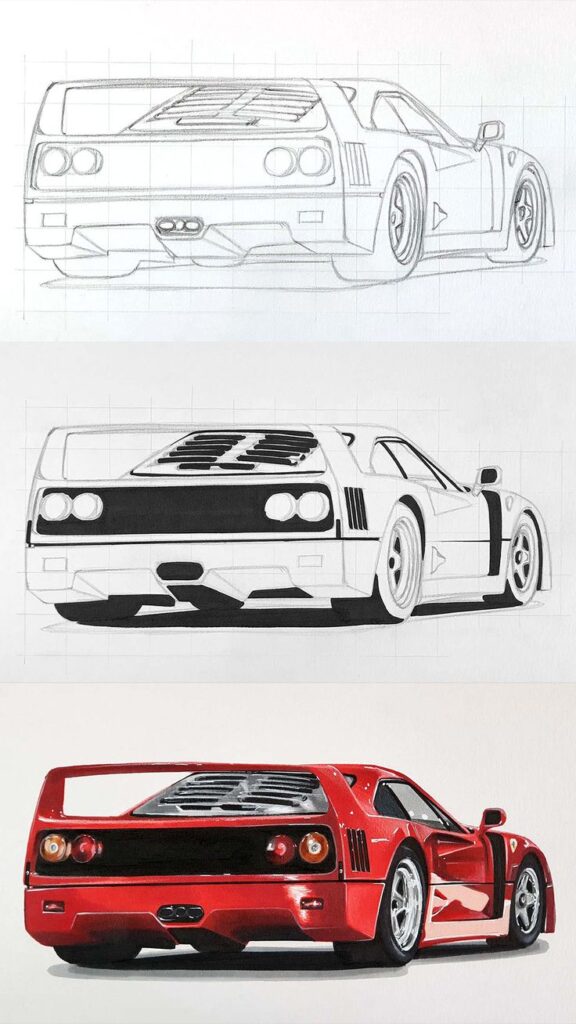
Another way to study real car photos is to sketch them. By sketching real cars, you can practice your observation skills and improve your ability to draw accurate proportions. Start by drawing the basic shapes of the car, such as the body, wheels, and windows. Then, add the details such as the lights, mirrors, and door handles.
In addition, studying real car photos can help you develop your own style. By observing the different shapes and styles of cars, you can gain inspiration for your own car drawings. You can also learn from the design choices made by car manufacturers and apply them to your own drawings.
Overall, studying real car photos is an important step in improving your car drawing skills. By observing the details and proportions of different cars, you can gain valuable insights into how to draw them accurately and develop your own style.
6. Practice Different Angles
To create a realistic automotive drawing, it’s important to practice drawing from different angles. This will help you develop your skills and ensure that you can draw any car from any angle.
One way to practice drawing from different angles is to use reference photos. Look for photos that show the car from different angles, such as front, back, side, and three-quarter views. This will help you understand how the car looks from different perspectives and how to draw it accurately.

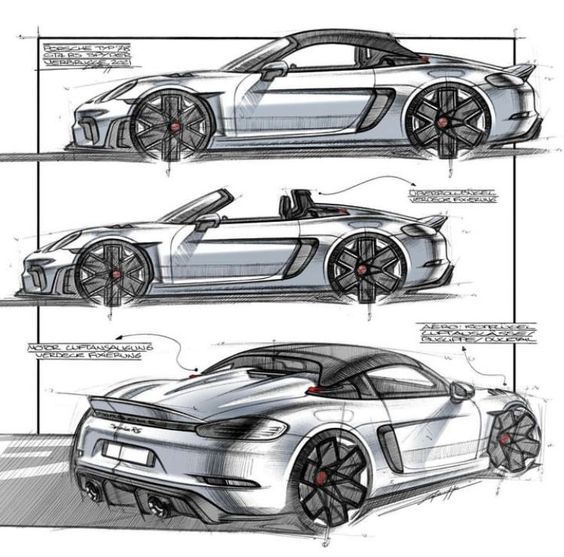
Another way to practice drawing from different angles is to use a 3D model. There are many 3D models available online that you can use to practice drawing from different angles. This will help you understand how the car looks in three dimensions and how to draw it accurately.
When practicing drawing from different angles, it’s important to pay attention to the details. Look for the small details that make the car unique, such as the shape of the headlights, the design of the wheels, and the placement of the mirrors. This will help you create a more realistic drawing that captures the essence of the car.
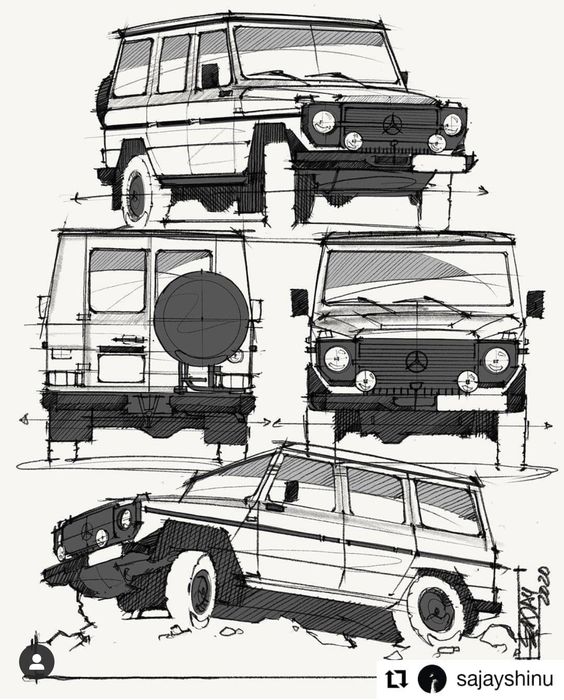

Overall, practicing drawing from different angles is an important part of developing your automotive drawing skills. By using reference photos and 3D models, and paying attention to the details, you can create realistic drawings that capture the beauty and essence of any car.
7. Experiment with Shading
Shading is an essential part of creating a realistic car drawing. It adds depth and dimension to the vehicle, making it appear more three-dimensional. Experimenting with shading techniques can help an artist create a more dynamic and visually interesting drawing.
One technique is to use hatching and cross-hatching to create shadows and highlights. This involves drawing parallel lines close together to create a darker value, and crossing those lines with another set of lines to create a lighter value. Another technique is to use stippling, which involves creating a pattern of dots to create a gradient effect.
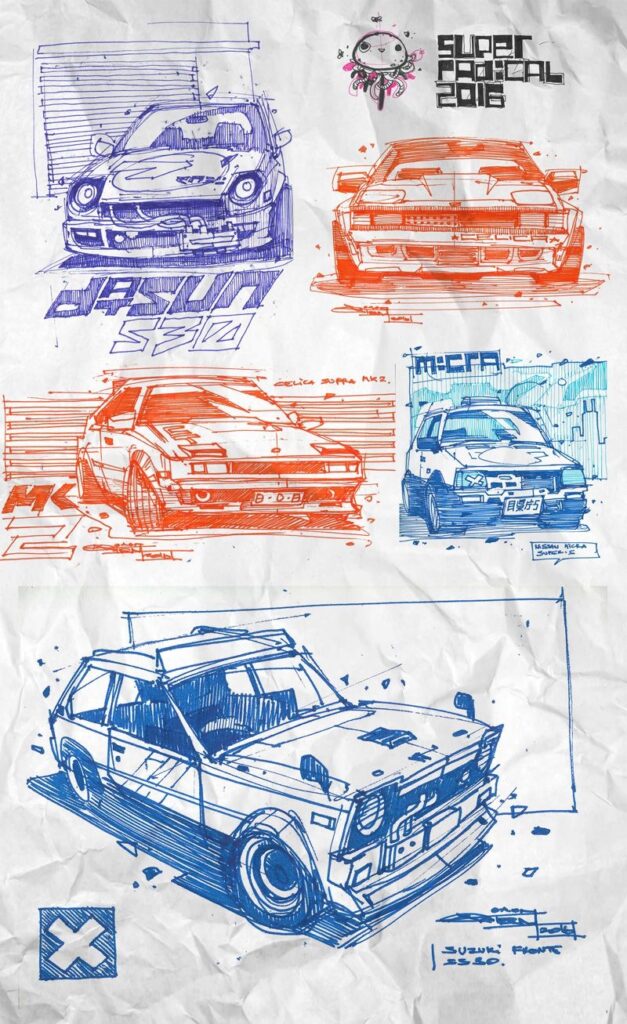

It is important to pay attention to the direction of light when shading a car drawing. The shadows and highlights should be consistent with the light source in the drawing. This will make the drawing appear more realistic and believable.
When practicing shading, it is important to start with simple shapes and gradually work up to more complex forms. This will help an artist develop their skills and become more comfortable with shading techniques.

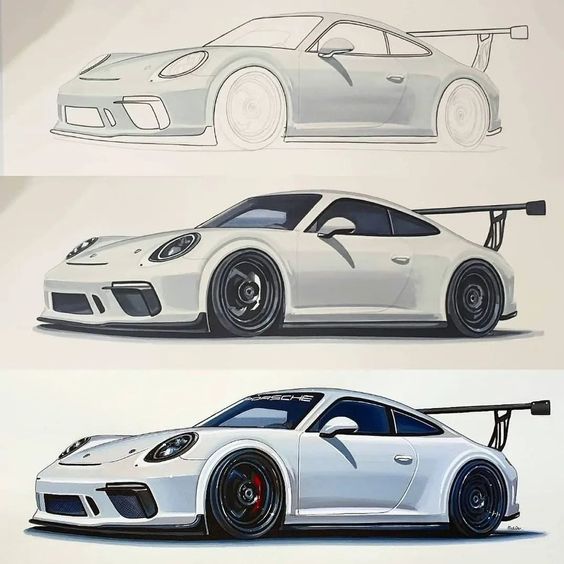
By experimenting with shading techniques, an artist can create a more dynamic and visually interesting car drawing.
8. Highlight Key Details
When it comes to creating a realistic car drawing, highlighting key details is essential. These details can include everything from the car’s headlights and taillights to the shape of the grille and the wheels. By emphasizing the most important details, the drawing will look more realistic and visually appealing.
One way to highlight key details is to use contrast. By making the important details darker or lighter than the surrounding areas, they will stand out more. This can be achieved through shading techniques such as cross-hatching or stippling.


Another way to highlight key details is to use color. By using a different color or shade for the important details, they will stand out more. For example, if the car has red brake calipers, using a brighter shade of red for those areas will make them stand out more.
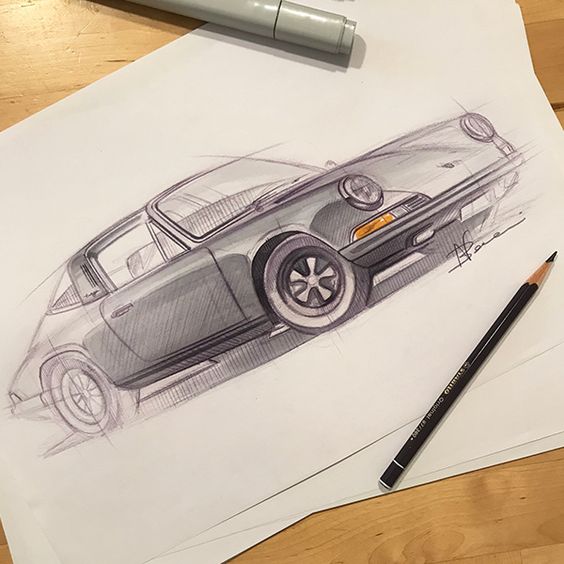
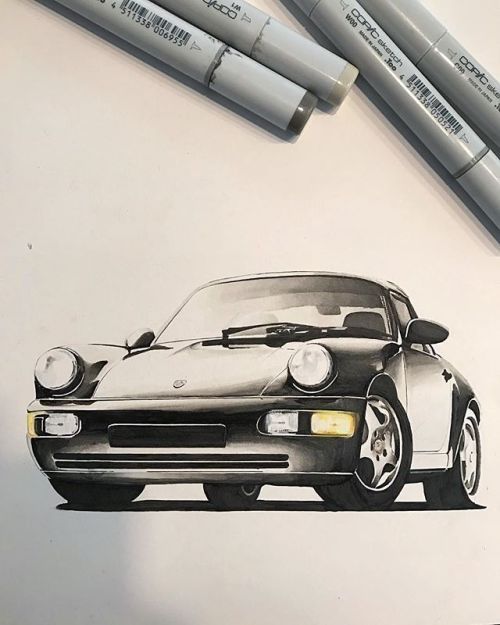
It’s important to remember not to overdo it when highlighting key details. Too much contrast or color can make the drawing look unrealistic or cluttered. The key is to strike a balance between highlighting the important details and maintaining a cohesive overall look.
By following these tips, anyone can create a realistic car drawing that highlights the key details and looks visually stunning.
9. Learn About Car Anatomy
To draw a car accurately, it is essential to understand its anatomy. The anatomy of a car includes various components such as the body, wheels, engine, and suspension.
The body of a car is made up of different parts such as the hood, roof, doors, and trunk. Each component has a specific shape and size, and it is essential to understand these details to draw a car accurately.
The wheels are another crucial part of a car. They come in different sizes and shapes, and it is important to understand the perspective and proportions of the wheels in relation to the body of the car.

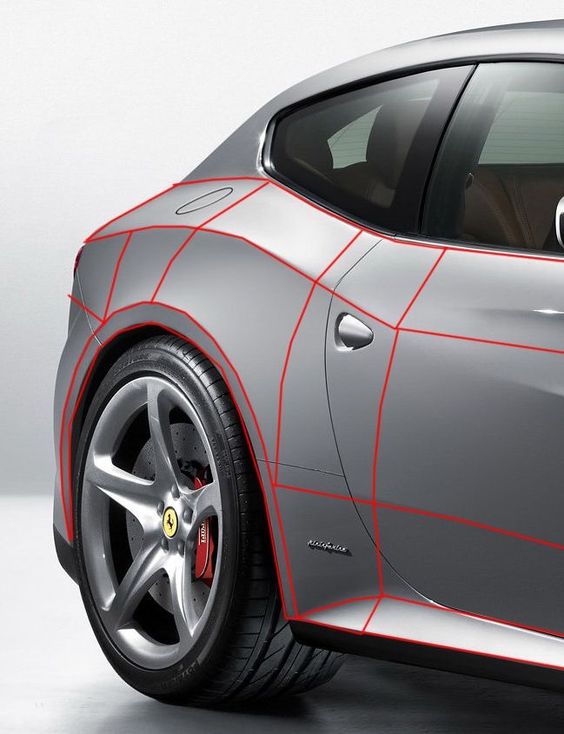
The engine is the heart of the car, and it is essential to understand its basic components such as the pistons, crankshaft, and camshaft. Knowing these details will help you draw the engine accurately.
Finally, the suspension is what connects the car to the road. It includes components such as the shocks, struts, and springs. Understanding the suspension will help you draw the car in a way that accurately represents its weight and balance.
By learning about car anatomy, you will be able to draw cars with more precision and accuracy. It will also help you understand how different components work together to create the final product.
10. Use Reference Materials
When it comes to drawing cars, using reference materials can be incredibly helpful. Reference materials can include anything from photographs of cars to sketches or blueprints. By using reference materials, you can get a better sense of the proportions and details of the car you are drawing, which can help you create a more accurate and realistic drawing.
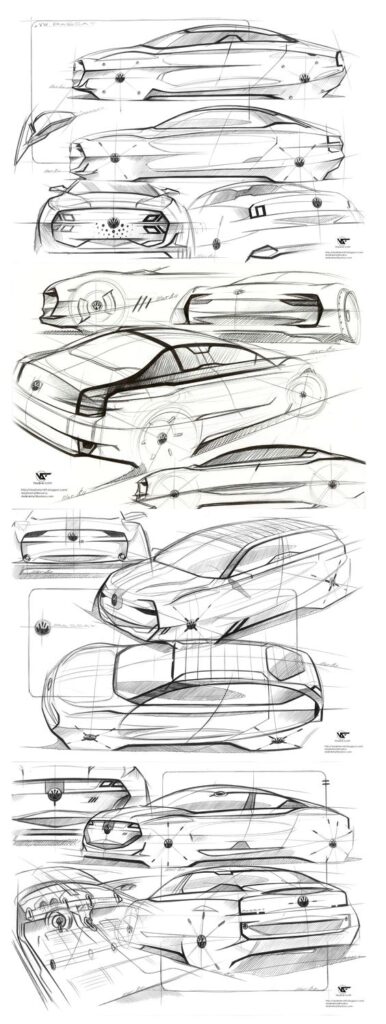
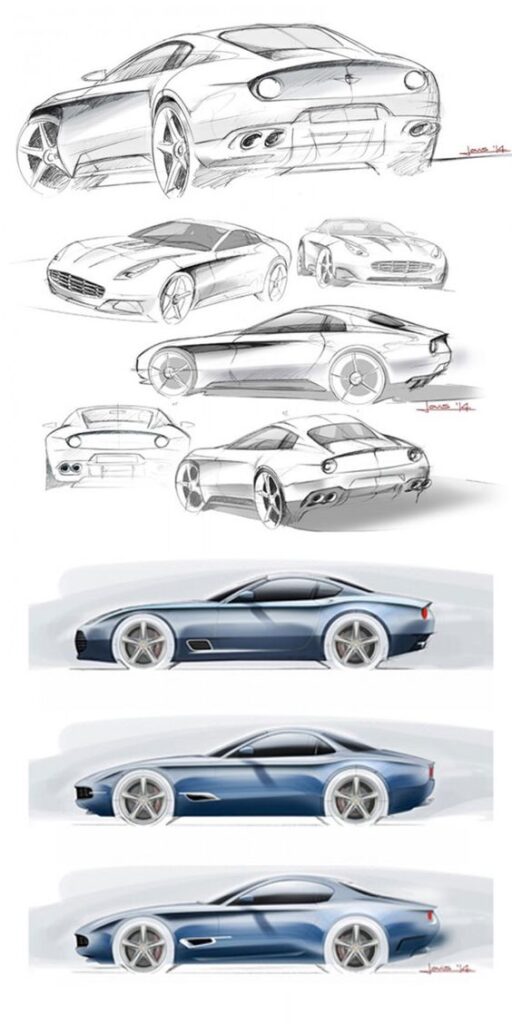
One of the most important things to keep in mind when using reference materials is to make sure that you are using high-quality images. Blurry or distorted images will not be helpful and may even be counterproductive. Look for images that are clear and well-lit, and that show the car from a variety of angles.
Another helpful tip is to use a grid system when working from reference materials. By dividing your paper into a grid and using the same grid on your reference image, you can more easily translate the proportions and details of the car onto your drawing.
Overall, using reference materials can be a valuable tool for anyone looking to improve their car drawing skills. By taking the time to find high-quality images and using a grid system, you can create more accurate and detailed drawings that truly capture the essence of the cars you are drawing.
Understanding Basic Car Shapes
When it comes to drawing cars, understanding basic car shapes is essential. This section will cover two techniques that can help artists simplify complex forms and use geometric shapes to draw cars.
Simplifying Complex Forms
Drawing a car can seem daunting, but it can be simplified by breaking it down into basic shapes. For example, the body of a car can be broken down into a rectangle, and the wheels can be represented by circles. By simplifying complex forms, artists can focus on the overall structure of the car.
Using Geometric Shapes
Another useful technique for drawing cars is using geometric shapes. Geometric shapes, such as triangles and rectangles, can be used to create the basic structure of a car. This technique can help artists create accurate proportions and keep the overall design of the car consistent.
In conclusion, understanding basic car shapes is crucial for anyone who wants to draw cars. By simplifying complex forms and using geometric shapes, artists can create accurate and consistent designs.
Mastering Perspective in Car Drawings
When it comes to drawing cars, mastering perspective is crucial to accurately depict the vehicle’s shape, size, and position. Perspective refers to the technique of creating an illusion of depth and space on a two-dimensional surface. In car drawings, perspective plays a vital role in determining the angle and direction of the vehicle’s lines, as well as establishing its position and height in relation to the ground.
One-Point Perspective
One-point perspective is a technique in which all lines converge at a single point on the horizon line. This technique is ideal for drawing cars from the front or back, where the vehicle’s width is the most prominent feature. To draw a car using one-point perspective, the artist should first establish the horizon line and the vanishing point. The horizon line represents the viewer’s eye level, while the vanishing point determines the angle and direction of the vehicle’s lines.
Two-Point Perspective
Two-point perspective involves two vanishing points on the horizon line, which creates the illusion of depth and space. This technique is ideal for drawing cars from the side, where the vehicle’s length is the most prominent feature. To draw a car using two-point perspective, the artist should first establish the horizon line and the two vanishing points. The vanishing points should be placed at equal distances from the center of the drawing and represent the direction of the vehicle’s lines.
In conclusion, mastering perspective is essential to creating accurate and realistic car drawings. By understanding the principles of one-point and two-point perspective, artists can accurately depict the vehicle’s shape, size, and position in relation to the viewer.
Adding Details and Textures
Drawing Realistic Tires
When drawing a car, it’s essential to pay attention to the tires. Tires can make or break the realism of a car drawing. To draw realistic tires, one needs to focus on the tread pattern, sidewall design, and the tire’s overall shape.
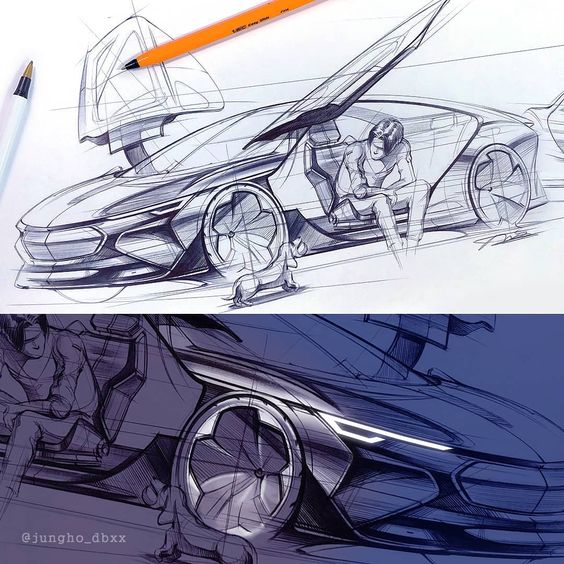

To create a realistic tread pattern, one can use a reference image or look at the actual tire for inspiration. It’s crucial to pay attention to the size and shape of the treads, as well as the spacing between them. Adding highlights and shadows to the treads can also help to create a more realistic look.
The sidewall design is another important aspect of tire drawing. It’s essential to pay attention to the lettering, logos, and any other details on the sidewall. Drawing these details with precision can help to add depth and realism to the tire.
Creating Reflections and Highlights
To make a car drawing look more realistic, it’s important to add reflections and highlights to the vehicle’s body. This can help to create the illusion of depth and shine, making the car look more three-dimensional.
To create reflections, one can use a reference image or look at the actual car for inspiration. It’s essential to pay attention to the angle of the light source and the direction of the reflections. Adding highlights to the car’s body can also help to create a more realistic look.
When adding highlights, it’s important to pay attention to the car’s curves and contours. Adding highlights to these areas can help to create the illusion of shine and depth. It’s also important to use the correct shading techniques to make the highlights look more natural.
Overall, adding details and textures to a car drawing can help to make it look more realistic and professional. By paying attention to the tires, reflections, and highlights, one can create a drawing that looks like it’s ready to hit the road.
Frequently Asked Questions

What are the fundamental steps for drawing cars?
To draw cars, the fundamental steps include understanding car proportions, mastering basic shapes, using light guidelines, focusing on perspective, and studying real car photos. [1] These steps help to create a solid foundation for drawing cars and can help artists improve their skills.
How can I improve my car sketches using pencils?
To improve car sketches using pencils, one should use a variety of pencils, including hard and soft leads, to create different textures and shading effects. It is also important to have a good understanding of light and shadow, as well as the use of hatching and cross-hatching techniques. [1]
What are some simple techniques for beginners to draw cars?
For beginners, it is important to start with simple shapes and work on basic proportions. One technique is to break down the car into basic shapes, such as rectangles and circles, and then gradually add details. Another technique is to use a grid system to help with proportions and placement. [4]
What are the best practices for adding realism to car drawings?
To add realism to car drawings, it is important to focus on details such as reflections, shadows, and textures. Using a variety of shading techniques and paying attention to the direction of light can also help to create a more realistic effect. [2]
What tips can help an artist draw cars more professionally?
To draw cars more professionally, it is important to practice regularly and to study the work of other artists. It can also be helpful to attend workshops or classes to learn new techniques and get feedback from other artists. Additionally, using high-quality materials, such as paper and pencils, can also help to improve the overall quality of the drawing. [5]
How can one develop their skills in drawing cars from scratch?
To develop skills in drawing cars from scratch, it is important to practice regularly and to focus on the fundamentals, such as proportions, shapes, and shading. It can also be helpful to study the work of other artists and to attend workshops or classes to learn new techniques. Additionally, using reference photos and working on a variety of different car models can help to improve skills and develop a unique style. [4]
- 3.3Kshares
- Facebook0
- Pinterest3.3K
- Twitter0


